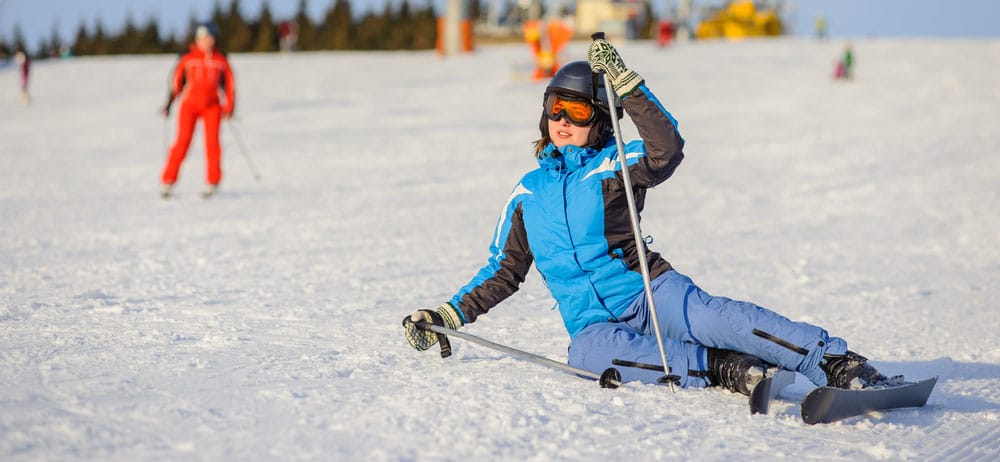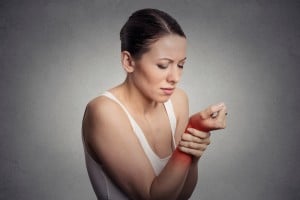
Much of Scotland and parts of Wales and North/East England received 2-4 inches of snow early in November. That means winter is now truly here. Along with the added snow, many people will be heading to the mountains to take advantage of doing winter sports. So here’s our guide to staying safe on the mountain.
How Safe Are Winter Sports?
On average, 10,000 Britons are injured while on the slopes every year. While this may sound like a lot, only three in every 1,000 people will incur an injury – or a 0.3% chance per skier. In terms of fatalities, there are 54 deaths a year out of 9.8 million participants worldwide.
Skiing is less dangerous compared to other high-energy sports, but more dangerous compared to daily activities. Boxing results in 5.2 injuries per 1,000 games and football result in 3.8 injuries. Snowboarding injuries are 3.8 per 1,000 exposures, slightly more dangerous than skiing (3.0 per 1,000).
What Are the Common Injuries?
The majority of injuries that occur on the slopes will not need medical attention as these are only minor scrapes, bumps or bruises. For non-serious injuries, PRICE (protection, rest, ice, compression and elevation) will provide sufficient treatment.
There are many different injuries that can occur, but below are the most common.
Sprains
A sprain is a twist or a wrench of a ligament, such as an ankle, wrist or other joint, that occurred suddenly and violently that it caused pain and swelling but not a dislocation.
Fractures
Since the majority of winter sports involve high speeds, it makes injuries like fractures more common. The stress of a high-speed impact can cause a variety of fractures in the body, from the fibula to the ribs.
Lower Back Pain
With constant bending over while skiing, back pain is common due to overuse of the lower back and abdominal muscles. Even without doing strenuous sports, 46.5% of the population will suffer from it. Treatment for short-term back pain includes remaining active, painkillers (NSAIDS, such as ibuprofen), hot and cold treatment and relaxation.
Heel/Foot Pain
This is the most common cause of heel pain and is either caused by traction or compression of nerves. It is common with runners and other high-impact sports or sports that are ankle intensive. PRICE is the most common treatment, but if you are still suffering after a month then seek medical advice.
For serious injuries, where there is severe pain, lumps, numbness, loss of movement or trauma to the head, seek medical attention immediately.
Preventing Injuries
Prepare Your Muscles
Skiing and snowboarding are intense on your quads and hamstrings so exercising these muscles will help prevent strains. If you live near sea level, increasing the strength of these muscles will help you adjust to the increased elevation of most ski slopes.
Once on the slope, ensure you have a proper warm up and stretch your muscles before doing any strenuous activity.
Take Lessons
An obvious one, but you should know how to ski before going skiing. Once you know the techniques, you can put less strain on your muscles and joints along with avoiding losing control.
Start Off Slow
Even the most experienced skiers need a little time to readjust between seasons. This is especially true for skiers who rent equipment rather than own theirs.
After a long break, test out your skis on easy runs and start off slow. This should give you time to get to grips with controls and whether your equipment is up to the task.
Know Your Equipment
Your choice of equipment can cause injury if not properly used. For skis, the most common injury is caused by an incorrect setup of ski bindings. Make sure the DIN settings (the controls that can detach skis in a fall) are correct for your weight and ability.
Follow The Code of Practice
Many winter sports have their own code of practice – not binding but some common-sense rules to avoid injury and annoyance. For skiers, the code of practice are:
- Respect others on the slope
- Be in control – speed and manner skiing
- Know your route
- Overtake but leave adequate room on either side
- Avoid stopping on piste, especially when in narrow places or in reduced visibility
- If you need to climb or descend on foot, then do so at the side of the slopes
- Follow signs and other rules of the slopes
For more health and orthopaedic news, follow London Bridge Orthopaedic on Twitter, Facebook and LinkedIn.









